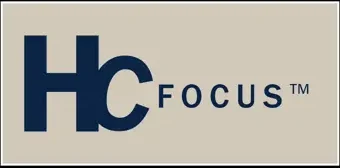Bringing a new medical device, test, or technology to market is no small feat. Between regulatory hurdles, coding complexities, payor requirements, and investor expectations, the path to reimbursement can feel overwhelming. That’s where a market access consulting team comes in—but not all deliverables are created equal.
Too often, innovators hire a consulting firm and walk away with a thick binder of definitions and coding explanations. It looks impressive, until you realize it doesn’t tell you what to do next. Definitions of coding categories and general explanations are easy enough to find on your own. What you should be looking for is not a glossary—it’s a roadmap.
A Roadmap, Not Just Information
A strong market access partner doesn’t just tell you what a Category III code is; they analyze your device, your use indication, and your goals, then recommend the right pathway forward. That means spelling out:
- Which codes to pursue (and which to avoid)
- Timelines for coverage and reimbursement
- Short-term and long-term strategies for success
- The potential risks of choosing the wrong path
Without this, you risk missteps, like underpricing early claims or selecting an interim code that jeopardizes long-term reimbursement. The wrong path can cost not only time and money but also credibility in the market. A good consulting team helps you avoid these pitfalls and sets you up for sustainable success.
Deliverables That Drive Action
One red flag to watch for: vague or generic deliverables. If the plan you receive could have been generated by an AI tool, or leaves you with more questions than answers, you’re not getting real value.
Instead, your consulting team should hand you a step-by-step, actionable strategy. This includes:
- A clear coding plan (short- and long-term)
- A coverage gap analysis of top national and regional health plans
- Policy insights that highlight what payers are looking for in clinical and real-world evidence
- Templates and tools (letters of medical necessity, appeal templates, prior authorization checklists) tailored to your device and indications
The goal is not just to explain your options, but to guide you through the right ones. They are the difference between having a binder of information and having an actionable plan.
What You Should Bring to the Table
For a consulting engagement to be effective, inventors and manufacturers should be prepared to share:
- FDA submissions and use indications
- Published literature, abstracts, and clinical data
- Sales or marketing materials (often repurposed for payer communications)
- Health economic data, if available
The consulting team can then organize this information into a payor-focused dossier, shaping your evidence into a compelling case for coverage.
Experience Matters
Finally, remember that market access is not just about information. It’s also about judgment and relationships. AI and automation can be helpful for gathering data, but it can’t replace experience garnered from years of navigating payor negotiations, understanding how policies evolve, or recognizing the nuances that can derail a device’s launch.
What you’re paying for is not just information: it’s judgment, context, and foresight. The right consulting team brings clarity to complexity and ensures you’re building not just for initial coverage, but for sustainable long-term success
What HC Focus Brings
At HC Focus, we believe market access consulting should go beyond definitions. We work closely with medical device innovators to create step-by-step, actionable roadmaps that anticipate challenges, align with payer expectations, and position new technologies for long-term reimbursement success. From coding strategy and coverage analysis to evidence planning and payer communications, our goal is simple: to guide you confidently from innovation to adoption.
